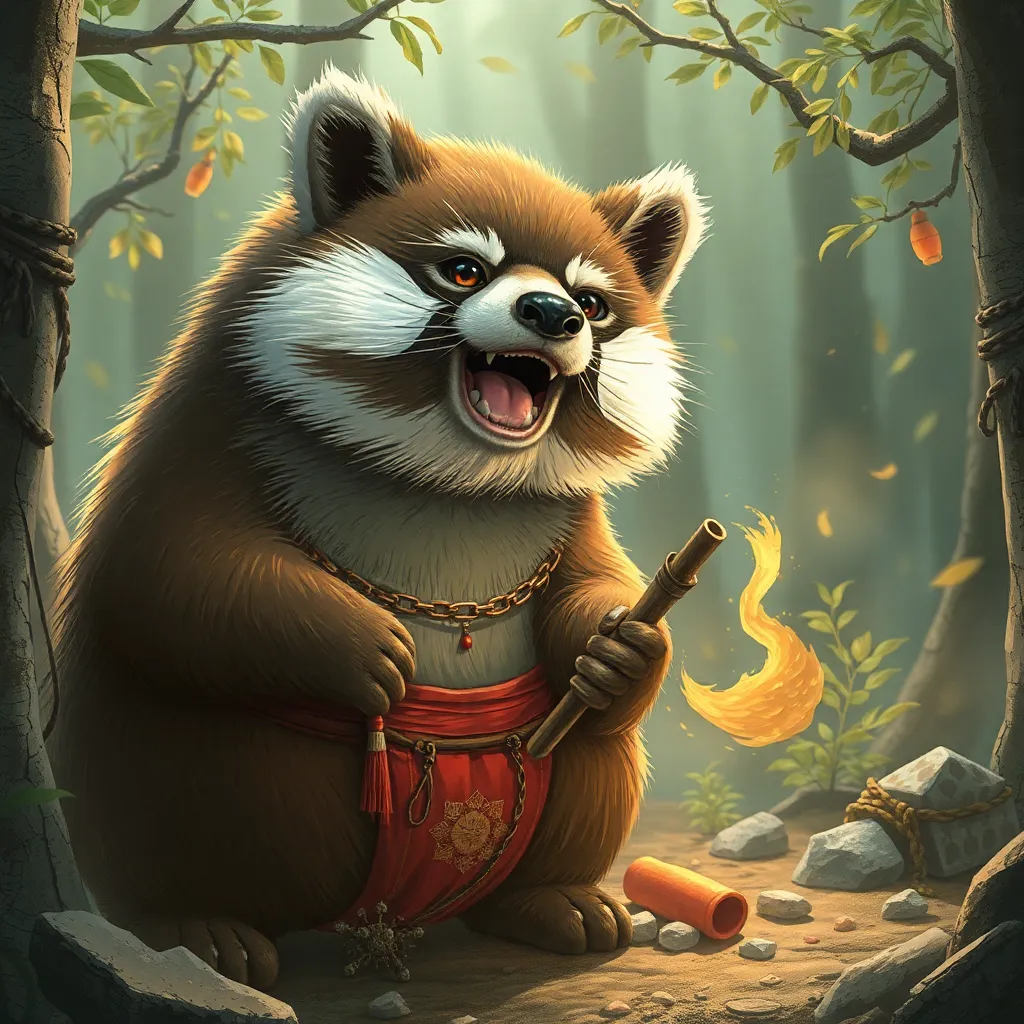Beyond the Magic Pouch: Exploring the Diverse Lore of the Tanuki
I. Introduction to Tanuki: The Shape-shifting Trickster
The tanuki, a creature deeply rooted in Japanese culture, is often depicted as a shape-shifting trickster with a playful yet mischievous spirit. With its distinct physical features, resembling both a raccoon and a dog, the tanuki has captivated the hearts of many through its whimsical and often humorous tales. In Japanese folklore, the tanuki is more than just an animal; it embodies themes of transformation, playfulness, and the complexities of nature.
Throughout history, the significance of the tanuki has persisted, symbolizing various aspects of life, from prosperity to the mysterious forces of the natural world. It serves as a reminder of the thin line between reality and illusion, a theme that resonates throughout Japanese mythology.
II. Historical Roots of Tanuki Lore
A. Origins in ancient Japanese texts and beliefs
The origins of tanuki lore can be traced back to ancient Japanese texts, where the creature was often associated with supernatural powers and a connection to the spirit world. One of the earliest mentions of the tanuki appears in the “Nihon Shoki,” a historical chronicle from the 8th century, which refers to tanuki as beings that could transform and bring mischief to humans.
B. Influence of Chinese mythology on tanuki stories
Chinese mythology has also played a significant role in shaping the tanuki’s lore. The Chinese “huli jing,” or fox spirit, shares many similarities with the tanuki, including shape-shifting abilities and a penchant for trickery. This influence has contributed to the rich tapestry of stories surrounding the tanuki, blending elements from both cultures to create a unique narrative.
III. The Tanuki’s Symbolism in Japanese Culture
A. Representations of fertility and prosperity
In Japanese culture, the tanuki is often associated with fertility and prosperity. It is believed that the tanuki can bring good fortune, especially in agricultural contexts. Statues of tanuki, often seen outside restaurants and shops, are thought to attract customers and enhance business success.
B. Tanuki as a protector of rice fields and natural resources
- Tanuki are seen as guardians of rice fields, safeguarding the crops from pests and ensuring a bountiful harvest.
- They are also considered protectors of the environment, representing harmony between humans and nature.
IV. The Tanuki’s Magical Abilities: The Fabled Pouch
A. Description of the magical pouch and its powers
One of the most fascinating aspects of tanuki lore is the legendary magical pouch, known as the “bake-danuki.” This pouch is said to hold the power to transform the tanuki into various forms and even create illusions. With this ability, the tanuki can deceive humans, play pranks, or help those in need.
B. Comparisons to other mythological creatures with similar traits
The tanuki’s magical abilities draw parallels to other mythological creatures, such as the kitsune (fox) in Japanese mythology and the selkie in Celtic folklore. Each of these creatures possesses shape-shifting powers and the ability to navigate between worlds, showcasing a universal theme of transformation in mythology.
V. Tanuki in Popular Culture
A. Tanuki in literature and traditional art
Throughout Japanese literature and traditional art, the tanuki has been a popular subject, often depicted in playful or humorous contexts. Classic works, such as the “Konjaku Monogatari” (Tales of Times Now Past), feature tales of tanuki tricking humans, showcasing their cunning nature and whimsical personality.
B. Modern representations in films, anime, and video games
In contemporary culture, the tanuki has found a place in various forms of media, including films, anime, and video games. Notable examples include:
- Studio Ghibli’s “Pom Poko”: A film that highlights the struggles of tanuki against urban development, showcasing their magical abilities and social commentary.
- Video games like “The Legend of Zelda”: Featuring tanuki-inspired characters with transformative abilities.
VI. Regional Variations of Tanuki Legends
A. Differences in tanuki stories across Japan
Tanuki legends vary significantly across Japan, with each region attributing different characteristics and stories to the creature. In some areas, tanuki are celebrated for their trickery, while in others, they are revered as protectors and benefactors.
B. Influence of local geography and culture on tanuki lore
The local geography and cultural practices of each region influence the portrayal of the tanuki. For instance, in rural areas, tanuki are often depicted as guardians of the fields, while in urban settings, they may be viewed more as tricksters causing mischief.
VII. The Tanuki’s Dual Nature: Trickster vs. Guardian
A. Analysis of the tanuki as a mischievous figure
The dual nature of the tanuki is one of its most intriguing aspects. As a trickster, the tanuki often engages in playful deception, challenging the norms of society and highlighting the folly of human behavior. These tales serve to entertain while also providing moral lessons.
B. The protective and benevolent aspects of the tanuki
Conversely, the tanuki also embodies protective qualities, acting as a guardian of nature and agriculture. This duality reflects the complexities of the natural world, where chaos and harmony coexist.
VIII. Conclusion: The Enduring Legacy of the Tanuki
A. The tanuki’s relevance in contemporary society
The tanuki continues to hold a significant place in contemporary Japanese society, symbolizing resilience, adaptability, and the importance of nature. Its stories resonate with modern audiences, reminding them of the balance between human endeavors and the environment.
B. Reflections on the continuing evolution of tanuki lore
As society evolves, so does the lore of the tanuki, adapting to contemporary themes while retaining its core essence. The tanuki’s legacy as a shape-shifting trickster and guardian of nature remains relevant, ensuring that its stories will continue to be told for generations to come.



